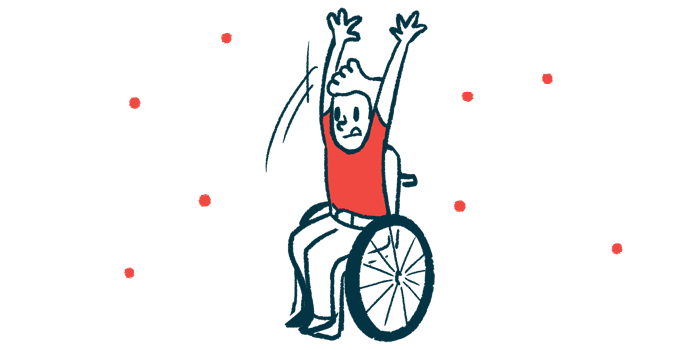Hip Pain More Common in SMA Type 2 Than Type 1 Children: Study
Researchers set out to study frequency, risk factors of hip pain before use of DMTs

Hip pain is about four times more common among children with spinal muscular atrophy (SMA) type 2 than among those with type 1 disease, according to a study on pediatric patients who were unable to walk.
While nearly all children had evidence of hip joint problems on X-ray images, only few had pain strong enough to undergo an invasive intervention.
The study, “Hip pain in nonambulatory children with type-I or II spinal muscular atrophy,” was published in JBJS Open Access.
SMA is caused by mutations in SMN1, the gene that provides instructions to produce a protein called SMN. SMN deficiency makes the muscles become gradually weaker and wasted over time, leading to problems with movement, swallowing, and breathing.
Children with SMA type 1, who are typically unable to sit unaided, and those with type 2 disease, who are able to sit but not stand independently, have more profound muscle weakness than those with the milder type 3, who are able to walk.
Type 1 and 2 patients also have more frequent and severe bone problems, such as scoliosis, an abnormal and progressive sideways curvature of the spine, and hip dislocation.
This is associated with a diminished ability of the muscles to support the body and a reduced use of some muscles, especially in those who are unable to walk (nonambulatory).
“While the benefits of instrumented spinal fusion and/or growing rods to stabilize the spinal deformities have been demonstrated, the best treatment for hip [problems] in these nonambulatory children has been controversial, ranging from observation to aggressive surgical management,” the researchers wrote.
Hip pain frequency, risk factors
Researchers in the U.S. set out to define the frequency and risk factors of hip pain in nonambulatory type 1 and 2 patients before the widespread use of disease-modifying therapies (DMTs). They retrospectively analyzed the medical charts of 33 children with type 1 and 39 children with type 2 at a single clinic from 1993 to 2017 before the first DMT in the country, Spinraza (nusinersen), was approved in late 2016.
“These data will be crucial in assessing any effects that the new DMTs have on the natural history of hip [problems] and pain in nonambulatory patients with SMA,” they wrote.
The children included 44 girls and 28 boys, all unable to walk. Mean age at first visit was 1.2 years for those with SMA type 1 and 3.6 years with type 2. They were followed for a mean 10.2 years (range, 3.7–22.8 years).
Results showed about one-third (31.9%) of all patients reported hip pain at some time during the follow-up. Hip pain was more common in children with SMA type 2 than with type 1 (49% vs. 12%), but both groups were about the same age when hip pain first appeared (mean of 9 vs. 8 years).
Data also suggested an association between a higher number of copies of the “backup” SMN2 gene — which can partly compensate for the loss of SMN1-derived SMN — and a greater chance of having hip pain.
Since more SMN2 copies are associated with a milder disease, which in this case represents type 2, these results are consistent with a four-times higher rate of hip pain in type 2 patients than in those with type 1.
Among children with evaluable hip X-rays, all with SMA type 1 and all but one with type 2 had evidence of problems with the hip joints on X-ray images. No significant differences in hip status were detected between patients reporting no pain and those with any level of pain.
While “nearly all patients had abnormal findings on hip radiographs,” fewer than 10% had “enough pain to seek an invasive intervention,” the researchers wrote. Specifically, none of the children with SMA type 1 and only seven (17.9%) with SMA type 2 had symptoms severe enough to undergo an invasive procedure.
Such an intervention eased hip pain in almost all the children, but only completely eliminated it in one. This involved injections directly into a hip joint in six children, surgery to correct problems of an earlier spine surgery in two, and the surgical removal of a piece of thigh bone in one.
Also, nearly all (95.8%) had scoliosis at the last assessment, and 63% had undergone spinal surgery.
Surgery on the pelvis was found to be a significant risk factor for hip pain, as children undergoing such a procedure were 3.5 times more likely to have hip pain than those who hadn’t (82% vs. 18%).
“No significant differences were found with respect to the mean age at the onset of scoliosis, the mean age at the time of scoliosis surgery, or whether insertion of growing rods or posterior spine fusion was performed between those with and without hip pain requiring invasive treatment,” the researchers wrote, noting theirs was the “largest study to document the prevalence of hip pain in severely affected, nonambulatory children with type-I or type-II SMA” and one that “offers baseline data for hip [problems] and pain as the medical treatment of SMA transitions to DMTs.”








